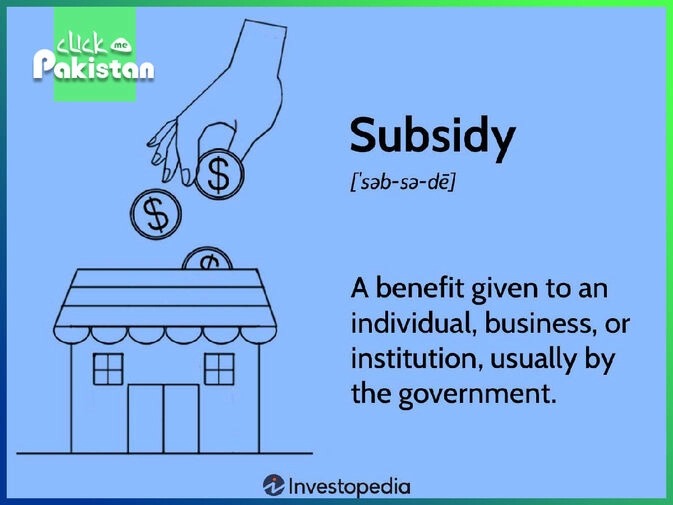In the modern world where the nature of the economy is quite dynamic, the following are some measures that governments use to address their people as well as industries. One of these tools is the general subsidy. But what is this general subsidy and why is it so significant? In this blog, the idea of the post-truth is defined, and different types of post-truth are presented and discussed along with its impact on society and economy.
What is meant by the term a General Subsidy?
A general subsidy is known as monetary assistance accorded to individuals, businesses or industries by the government in the course of undertaking economic activities averting the cost of goods and services or even encouraging particular actions. They can be monetary, which is paid out directly in cash, fiscal, in the form of tax exemptions, or administered through the manipulation of prices.
Types of General Subsidies
Direct Subsidies
These are cash transfers which are made by the government directly to the targeted subjects or organizations. Some examples of transfer payments include; Unemployment benefits Agriculture subsidies Social Welfare payments.
Indirect Subsidies
Subsidies or general subsidies are not cash transfers but are given in the form of tax credits, concessional rates of interest on borrowing, or artificially fixed prices. Some examples include tax credits on renewable energy and social grants for necessities such as energy and food. This is another form of general subsidy.
Cross-Subsidies
In this type, one set of consumers is forced to pay more for a product or a service so that another set of consumers can pay less. An example is the setting of higher tariffs for commercial electricity to be used as a means of subsidizing the residential consumer tariffs.
Why General Subsidy is Given by the Governments?
Economic Stability
Subsidies can also assist the economy to become stable since they can support industries that are struggling hence reducing cases of mass layoffs or in turn, an economy in a state of recession.
Social Equity
They can be used in a way that enhances social justice by encouraging the provision of the necessities to the needy hence keeping their standard of living.
Market Failures
Subsidies may correct market failures which result from the inability of markets to promote production and consumption that has positive externalities for instance education and health services.
Innovation and Growth
The rationale for subsidizing R&D is that it not only increases overall prosperity today but also stimulates long-term advancement in the future.
Benefits of General Subsidy
Reduction in Poverty
Targeted subsidies will be helpful when it comes to alleviating the living status of impoverished populations and making their living standard better.
Economic Growth
Is policies can help to promote consumers’ expenditures and business investments by awarding subsidies.
Job Creation
In this regard, subsidies imply benefits to industries and businesses which in turn help to promote employment and reduce unemployment.
Environmental Protection
Government grants for green technologies and renewable energy may go a long way in decreasing the impacts of environmental pollution and degradation.
Challenges and Criticisms For General Subsidy
Budgetary Constraints
Subsidies are costly to implement since they call for public spending, a factor that can seriously affect any nation, but especially a developing one.
Market Distortions
Some can bring about market imperfections as they bring about overproduction or underpricing of goods and services because of general subsidy.
Dependency
It can be disadvantageous to industries to rely too much on subsidies because they can become less competitive and creative in their operations as they can rely on subsidies instead of efficiency.
Corruption and Mismanagement
Subsidy programs are also highly susceptible to social issues like corruption and mismanagement and, hence, they can equally become an ineffective and resource-wasting tool.
Case Studies
Agricultural Subsidies in the United States: The U. S. government pumps a lot of money into farmers, thus guaranteeing food security and derivatively, stability in agriculture. But these subsidies have also been condemned for favouring the big food-producing companies at the expense of the smallholder farmers.
Renewable Energy Subsidies in Germany
Currently, Germany has a policy called Energiewende, which is the move towards using renewable sources of energy; this policy includes subsidizing facilities in solar and wind energy production. This has made Germany the haven of renewable energy resources but at the same time leads to high electricity tariffs being charged to the consumers.
Conclusion
General subsidies are at the heart of determining and facilitating economic and social policies across the world. Listed below are some of the advantages that have been attributed to fiscal policies, it has the effect of achieving economic stability through maintaining fixed prices, they promote social equity, and they protect the environment Amongst the disadvantages are the following They might be costly, they can distort the market. The subsidies can be useful by effectively offering government support while also limiting the negative aspects of subsidies: this means that in practical terms, there must be a balance.
This task is crucial to analyze the issues of general subsidies to people and what decisions will be effective for economic development and the welfare of citizens.
Read Also For More: Demand Draft Application: Guide for Hassle-Free Transactions









